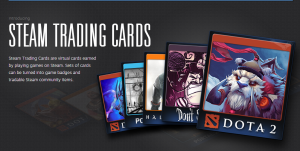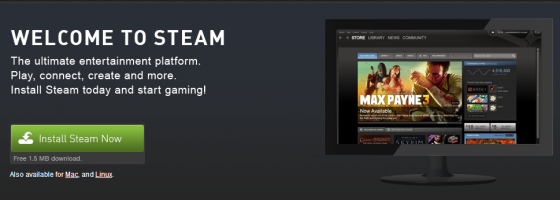Continuing my look at some important milestones for the Game Industry, we come to digital distribution and how it radically changed every aspect of the Industry.
Online Shopping Comes To Games:
Over the 90s to early 00s, there have been small examples of game developers making use of the Internet. Sega tried the “Sega Network” during the Sega CD era. And I have fond memories of playing Phantasy Star Online through my Dreamcast’s dial up modem( again, I feel old.) FPS games on the PC could be played by accessing a server and there were a variety of early examples of MMO play available. However designers were still chained to physical stores to sell their games and this gave those stores a lot of power.
It didn’t matter how great your game was if a store didn’t want to sell it for whatever reason. And this meant that publishers and developers had to bend over backwards to appease them. Not only that, but this also limited who could actually develop games as only someone with the backing of a publisher could strike a deal with a store like Walmart or Babbages and so on.
Digital distribution originally started as simple game clients for their respective owners like Stardock Central from Stardock or Steam with Valve. There were also smaller studios like Spiderweb Software that sold their games online, but this was only available through the site itself and not on a client and were more along the lines of shareware.
But as other studios started to see the advantages of a digital store front, these clients exploded in popularity and offered consumers and developers the chance to access games without the need of a physical store.
The advantages of a digital store provided game makers with a place to sell their games without worrying about physical space, cost and dealing with store owners who may not like their games. Even more important, it created the possibility for smaller game companies who may not have the money or clout to get into Walmart and such, to still get their game in front of consumers.

Virtual items like TF2 hats and trading cards have become big business. Both for the developers and the people buying and selling.
While major developers and publishers still released games at a high price point, middle tier and indie developers began to flood the market with lower priced games and changed the pricing structure for the game industry.
No longer was a game under $20 considered bargain bin. Instead, we saw a number of quality games released for $15 or less and proving that you could make it without having a AAA publisher fronting the cost.
Valve continued to improve things with introducing legitimate game sales to the industry, a concept that seems so normal today but was revolutionary a few years ago. While people argue that game sales have devalued titles to some extent, the positives have outweighed the negatives allowing more people to buy games and giving developers a massive number of sales in a single day.
Today, the variety of games that you can buy has exploded and the industry as a whole has become better thanks to digital distribution. The future appears to be moving this concept to the console market beyond just buying indie games. You can now buy retail games and Sony is looking into using cloud technology and streaming to replace designing their systems with backwards compatibility.
And of course we have to mention how DLC and microtransactions were given birth thanks to digital distribution and the ability to quickly update games. DLC has been able to extend the life of numerous games such as Team Fortress 2 which has arguably been the most popular game from Valve.
While digital distribution has been great, there are a few downsides that should be mentioned. Digital clients have made it easier to put your game in front of an audience, but they have also become the gate keeper in a sense. Many people will refuse to buy your game unless it’s on Steam due to the quality of life features on the service, even if it’s cheaper elsewhere.
I’ve spoken to several developers who have had bad luck getting on Steam and had to fight their way onto the client because they know that being on Steam could mean the difference between success and failure. Even on the podcast we talked about the allure of items like TF 2 Hats and trading cards as sweetening the deal and how they have also become a business.

Despite being a great developer. Soldak Entertainment had a lot of trouble getting their games onto Steam and obviously lost sales due to it.
The sheer number of games both available on Steam and attempting to get on through Greenlight has flooded the market.
This has also caused many gamers to call into question the quality of these games with notorious examples like The War Z or early access games that are abandoned.
Some feel that it is becoming harder to sell games as you’re not only competing for the player’s time thanks to so many games, but also their wallets. You may think that pricing your game at $10 was a smart move, however what happens when a sale hits and now you have the most expensive game on the store page?
Speaking of the store page, just as getting on Steam is a huge deal, it is also fleeting. When games are being released daily on the client, it’s easy for your game to be quickly shuffled off of the front page and away from consumer eyes. Similar to the mobile market, you only have a few days at most for people to see your game and make your sales before it’s gone. Then your only hope is either to be a part of a sale or release some new content that warrants another front page mention.
The importance of digital distribution cannot be overstated and was the linchpin for the rise of our next two topics, starting with how Indies have taken over.
Click here for the previous entry



Pingback: Evolving The Game Industry: Saving | Game Wisdom()